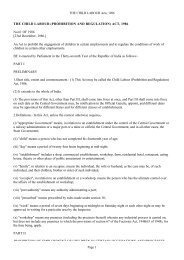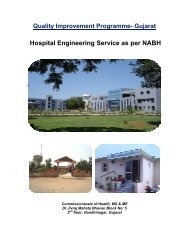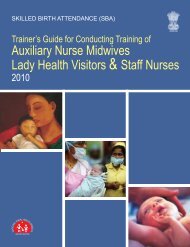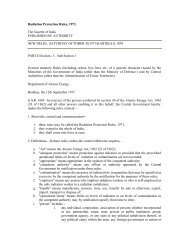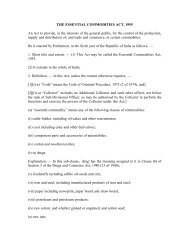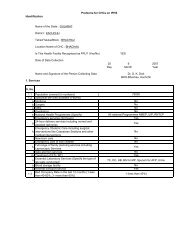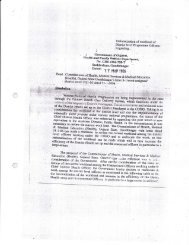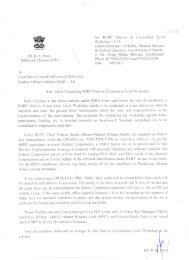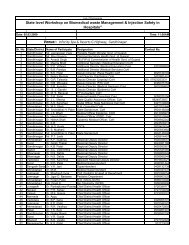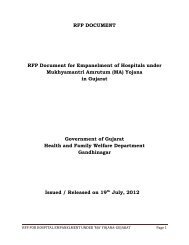Respiratory distress in - Newbornwhocc.org
Respiratory distress in - Newbornwhocc.org
Respiratory distress in - Newbornwhocc.org
You also want an ePaper? Increase the reach of your titles
YUMPU automatically turns print PDFs into web optimized ePapers that Google loves.
NNF Teach<strong>in</strong>g Aids:Newborn Care<br />
ray( refer RD-20 ). An arterial blood gas if available is a good adjunct to plan<br />
and monitor respiratory therapy.<br />
Slide RD-15<br />
Pr<strong>in</strong>ciples of management<br />
Supportive therapy is most crucial <strong>in</strong> all neonates with respiratory <strong>distress</strong> and<br />
the same pr<strong>in</strong>ciples apply, whatever the cause.<br />
Monitor<strong>in</strong>g is needed <strong>in</strong> all babies with respiratory <strong>distress</strong>. Cl<strong>in</strong>ical monitor<strong>in</strong>g<br />
is most important as sophisticated equipment may not be available. The<br />
scor<strong>in</strong>g system could be utilised to monitor babies. An <strong>in</strong>creas<strong>in</strong>g score would<br />
<strong>in</strong>dicate worsen<strong>in</strong>g <strong>distress</strong>.<br />
All babies with significant <strong>distress</strong> should be kept on IV fluids ; blood pressure<br />
and blood sugar should be ma<strong>in</strong>ta<strong>in</strong>ed.<br />
Other measures <strong>in</strong>clude oxygen therapy and if available ventilatory support or<br />
CPAP (cont<strong>in</strong>uous positive airway pressure). Specific therapy is now available<br />
for RDS i.e. surfactant, but even with this ventilatory support will be needed.<br />
Slide RD-16, 17<br />
Oxygen therapy<br />
All babies with worsen<strong>in</strong>g or severe respiratory <strong>distress</strong>, with or without<br />
cyanosis should get oxygen. Oxygen should be warm and humidified . It can<br />
be provided through nasal catheters or preferably through oxygen hood. The<br />
flow rate should be 2-5 L/m<strong>in</strong> (40-70% O 2 ) . Oxygen should be used with<br />
caution especially <strong>in</strong> preterm babies. Respect oxygen -it has both good and<br />
toxic effects and use it only if needed. Use lower concentration of oxygen to<br />
relieve cyanosis or <strong>distress</strong>. Pulse oximetry is a simple non-<strong>in</strong>vasive method<br />
for measur<strong>in</strong>g oxygen saturation. Ideally all neonates with respiratory <strong>distress</strong><br />
should be monitored us<strong>in</strong>g a pulse oximeter and oxygen should be<br />
adm<strong>in</strong>istered if saturations are less than 90%. Aim is to ma<strong>in</strong>ta<strong>in</strong> saturation<br />
between 90-93% to avoid hyperoxia.<br />
5




